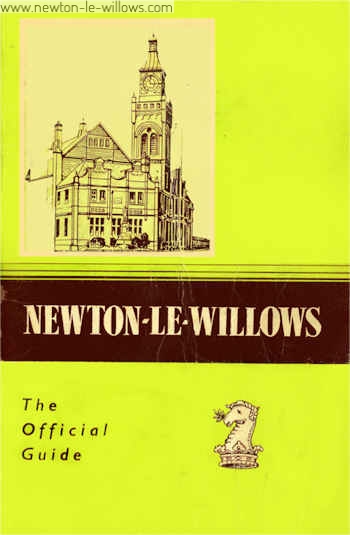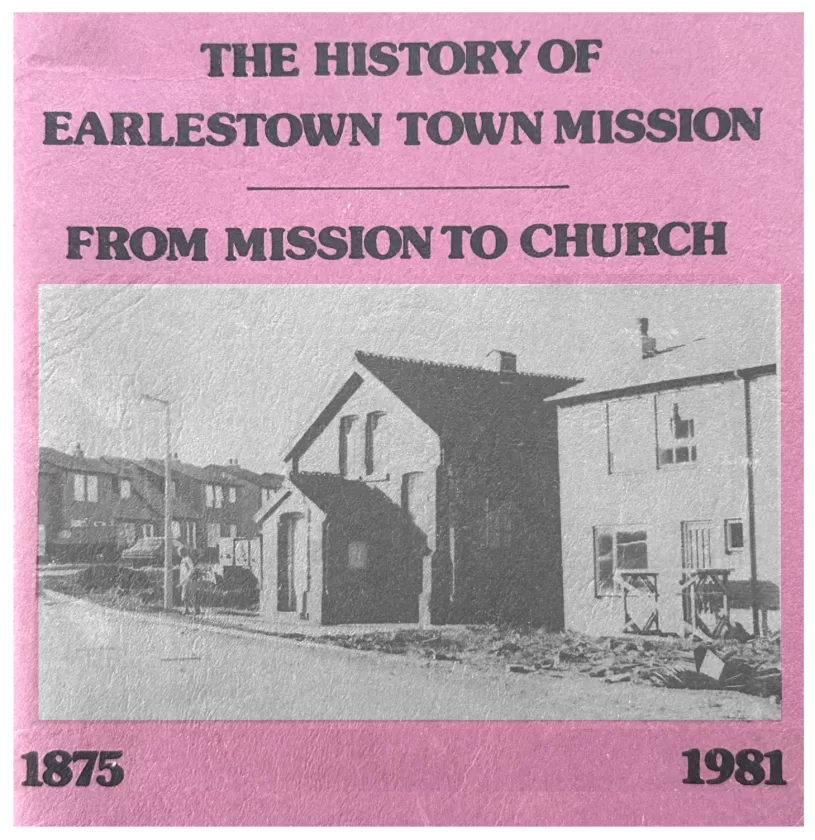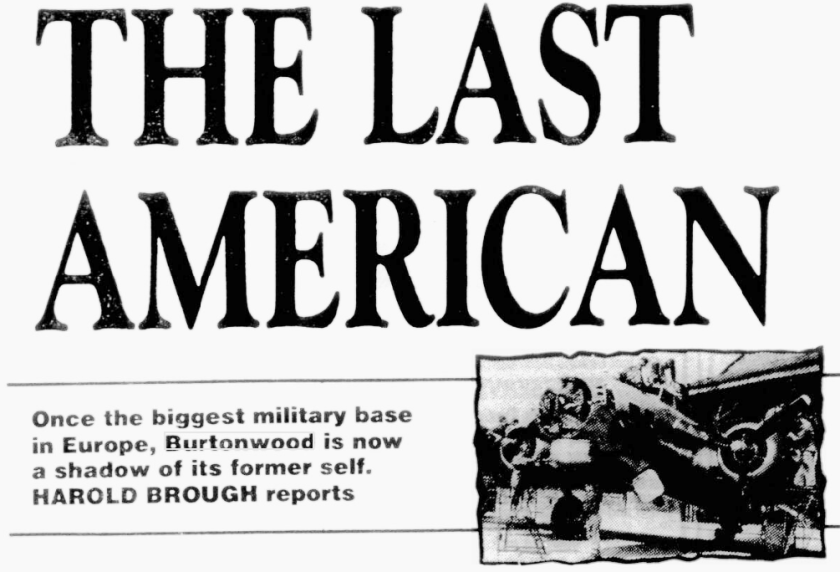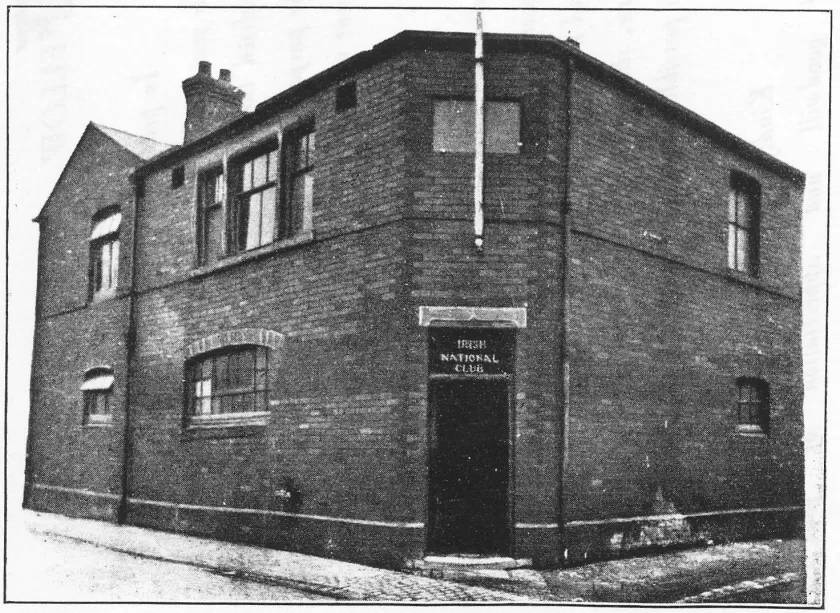Situation and Communications

THE URBAN DISTRICT of Newton-le-Willows is in South West Lancashire. It is an industrial town but is within easy reach of open countryside and has many open spaces within its boundaries and good class residential areas. The population is approximately 22,000 and the district comprises some 3,103 acres.
Communications are very good. The Earlestown station in the centre of the commercial sector of the town is on the main Liverpool-Manchester railway and is an important junction. The Trans-Pennine diesel services stop at this station on their regular journeys to and from Yorkshire and Liverpool. There are frequent intermediate services to Liverpool and Manchester and regular local services operate to St. Helens and Warrington. The main north-south line also crosses the district.
The Motorway M6 and the trunk road A49 pass through the district and the junction with the East Lancashire Road is situated just outside the Council’s boundary. Access to the Motorway M6 is available from both ends of the district.
Lancashire United Transport are the omnibus operators. They provide quite extensive services within the district and regular services to the nearby towns such as St. Helen’s, Warrington, Wigan and Leigh. Express services pick up passengers in High Street.
 |
 |
 |
 |
 |
Local Information
The Education Services in Newton-le-Willows are administered by the Lancashire County Council through a Divisional Executive Committee whose offices are situated at "Wellesley House", Crow Lane West, Newton-le-Willows. The District is well provided with schools and has a fine Grammar School and a College of Further Education and Junior Technical School. Two new schools, the Selwyn Jones County Secondary School and St. Aelred’s R.C. School were opened in 1964.
FIRE BRIGADE AND AMBULANCE SERVICES
An impressive new combined Fire and Ambulance station has recently been erected in the district by the Lancashire County Council who administer these services.
HEALTH SERVICES
Newton-le-Willows is incorporated in the Health Division No. 10 of the Lancashire County Council. The Divisional Medical Officer of Health, whose office is at the Old Rectory, Winwick, near Warrington, will be pleased to supply information about the many services provided.
HOSPITALS
The Newton-le-Willows Cottage Hospital provides treatment for general surgical, gynaecological and medical cases. The Hospital is administered by the Warrington and District Hospital Management Committee. A voluntary organisation, the Hospital Welfare Guild, does exceptionally good work at this hospital.
HOUSING
The Council are proud of their record in providing houses at reasonable rents. Over 1,000 have been erected since the War and the Council now own more than 2,600 dwellings.
The Council have completed their first programme for ridding the District of unfit houses and have pledged themselves to a policy of providing good accommodation for all the population. Particular emphasis is placed on the housing needs of the aged and the handicapped and with the co-operation of the Lancashire County Council special schemes have been undertaken.
There are many private developers in the Urban District who can offer for sale all types of dwellings on pleasing sites.
LIBRARY
The Council maintain a fine Public Library in Crow Lane East which comprises a generously stocked lending library, a reference department, a reading room and a children’s section. A branch library is provided at Vulcan Village.
MARKET
The Council own an exceptionally good Market Square and open-air Markets are held every Friday.
EARLY CLOSING
Earlestown : Thursday afternoon. Newton : Wednesday afternoon.
WATER SUPPLY
The Makerfield Water Board, Stephens Way, Goose Green, Wigan are the statutory water undertakers for the urban district.
ELECTRICITY
The North Western Electricity Board supply electricity and have showrooms at Bridge Street and Park Road North.
GAS
Gas is supplied by the North Western Gas Board. The Gas showroom and offices are in Queen Street.
SHOPPING FACILITIES
Earlestown is a good shopping centre where all goods and services may be obtained easily.
BANKS
The District Bank, Westminster Bank, Barclays Bank, Co-operative Wholesale Society Limited and the Warrington Trustee Savings Bank have branches in the district.
 |
 |
 |
 |
 |
PLACES OF WORSHIP
The Church of England has four Parish Churches and a Mission Church. These are Emmanuel Church Wargrave, Wargrave Road; St. Peter’s Church, High Street; St. John’s Church, Market Street; All Saints’ Church, Crow Lane East; and St. Phillip’s Mission Church, Common Road.
There are two Roman Catholic Churches, St. Mary’s and St. John’s Church, Crow Lane East and St. Patrick’s Church, Common Road.
There is a Congregational Church in Crow Lane East; Methodist Churches at Cross Lane and Legh Street and a Baptist Church at Crown Street.
SPORTS
Good facilities for sports are available. The Council own approximately seventy acres of parks and open spaces and at King George’s Field three football pitches and a cricket pitch are available. The Newtonle-Willows Cricket, Bowling, Hockey, Tennis and Rugby Union Football Club has extensive premises and a pavilion off Crow Lane East. The Viaduct Institute, Earle Street, The Vulcan Foundry Limited and other industrial firms provide similar facilities. There are many crown green bowling clubs. There is a Golf Course at Haydock Park. Horse race meetings are held regularly at the Haydock Park Course.
THEATRICAL ORGANISATIONS
The district is well served by its local amateur theatrical organisations. Excellent productions are staged at the Town Hall, Market Street. This Hall offers good facilities for all types of social and cultural events
 |
 |
 |
 |
 |
RESIDENTIAL HOTELS
Laurel Bank and Pied Bull, High Street and Legh Arms, Mill Lane.
RATES
1965/66. General 9s. 6d. Water ls. 2d.
LOCAL SOCIETIES AND ORGANISATIONS
A comprehensive list of the many societies and organisations may be had from the Clerk of the Council.
LOCAL PRESS
"Newton and Earlestown Guardian", "Newton and Golborne News" — published Thursdays and Fridays respectively.
PARLIAMENTARY CONSTITUENCY
Newton. Member — The Right Honourable F. Lee, M.P. Old People’s Bungalows, Newton-le-Willows
COUNTY COUNCIL ELECTORAL DIVISION
Newton-in-Makerfield.
Representatives : County Alderman J. Selwyn Jones, J.P. County Councillor Mrs. E. N. Kershaw, J.P.
COUNCIL OFFICERS
Clerk and Chief Financial Officer: J. Roberts, A.R.V.A.
Engineer and Surveyor : J. G. Gibson, M.B.E., M.I.Mun.E.
Medical Officer of Health: Dr. R. Ellis Jones, M.B., Ch.B., D.P.H.
Chief Public Health Inspector: L. M. Booth, M.A.P.H.I., M.R.S.H.
Librarian: Mrs. C. M. Caley, A.L.A.
Housing Director: S. Cook.
Collector and Market Superintendent : S. P. Moston.
POSTAL FACILITIES
General Post Office, High Street.
Sub-Offices: Earle Street, Crow Lane West, Crow Lane East, War-grave Road, Vulcan, Mill Lane.
RAILWAY STATIONS
Earlestown Station, Queen Street (for main services); Newton-leWillows, Mill Lane.
Commerce and Industry
 |
 |
 |
 |
 |
PAST AND PRESENT
Rather more than a century ago, an eminent topographer could already record of Newton that "many important works are carried on in its vicinity". The two locomotive foundries—one of which remains today—employed between 700 and 800 hands; an alkali works employed nearly 300 and produced one of the earliest types of chemical fertiliser invented by Baron Liebig; and there was "an establishment for the manufacture of crown-glass". There were sandstone quarries, and agriculture flourished.
Several old-established businesses from the great cities of South Lancashire moved into Newton; and the very year that the town’s board of commissioners were appointed, the big sugar refinery was set up.
The Vulcan Foundry produces the latest types of locomotives—as it did in 1830.
The Works today is part of the English Electric Group of Companies and re-equipped to meet the new demand for electric and diesel-electric locomotives. A few years ago the Foundry handed over, at the Newtonle-Willows works, the first locomotive to be supplied to British Railways under their great modernisation scheme.
The National Coal Board’s new Parkside Colliery is one of two large new collieries for the Lancashire coal field and will produce a million tons a year.
The Sankey Sugar Co., Ltd., have extensive premises on the banks of the St. Helen’s Canal. Thousands of tons of raw cane sugar are brought from Liverpool for refining. On arrival the raw cane sugar is taken into the refinery to be converted into the finished white product for table use and manufacturers.
T. & T. Vicars Ltd., moved from Liverpool to a larger factory in Newton in 1867. Today, they and their associates are member companies of Simon Engineering Ltd. An associate company, Simon-Vicars Ltd., manufacture machinery for continuous production of biscuits, bread, wafers and confectionery. Simon-Waldron Ltd., their other associates at Newton, are now recognised as a leading European manufacturer of coating plant for web processing of metal, paper, plastics, etc.
A branch of the raincoat manufacturing firm of Cohen and Wilks Limited, whose headquarters are in Manchester, has been established in the town. "Aquatite" is the world famous trade-mark of this firm.
There are large printing works owned by McCorquodale and Company Limited at Newton where every kind of commercial printing is undertaken.
Willochrome Limited undertake decorative chrome plating and also the same type of work in copper and other metals. They specialise in hard chroming machine components and tools.
There are a number of other local industries and the Clerk of the Council would be glad to supply information and deal with enquiries.
Historical Sketch of Newton-le-Willows
Newton, situated on a very important main road, has always been a place of note. In feudal times it was the Head of a Hundred, later Head of the Fee of Makerfield. The Lord of the Manor took its name as his title though he had no residence here. Fairs and a market were granted. Leland, an early English topographer, described the town’s condition in 1538: "Newton on a brook; a little poor market whereof Mr. Langton hath the name of his barony". It returned two members to Parliament soon after. In the 17th century civil war a skirmish took place at Red Bank. In 1748 a gathering of gentry ostensibly for hunting, was thought by the people to be a Jacobite rally and a riot ensued.
 |
{mosimage} | {mosimage} |
| {mosimage} | {mosimage} |
The borough decayed in the early 19th century; in 1824 its market falling into disuse, though courts baron and leet were still held in April, May and October by the Steward of the Borough and Bailiff of the Manor. The race-course and cockpit were disused. In 1832 Newton was disfranchised. The coming of the railway in 1830 arrested the decline, manufactures springing up, cotton spinning, crown glass, iron founding and vitriol works being present by 1840. The immense wagon works of the London and North Western Railway Company at the Sankey Viaduct resulted in the foundation of Earlestown, which also has an engineering works and a sugar refinery. Other communities grew up at Wargrave, and around the Vulcan Foundry. A local Board of Improvement Commissioners, meeting every three months, was established in 1855 to govern Newton. In 1895 the Urban District Council was constituted with fifteen members, three from each of the five wards of the township.
After this general account of Newton’s story it may be of interest to provide more details of aspects of the town’s development.
Before the Norman Conquest Newton headed a Hundred assessed at five hides. Edward the Confessor held one of the hides including Newton, in demesne and was Lord of the Manor. After a while the Fee or Barony of Makerfield came into being covering much of the same area as the former Hundred. Newton was the Head of the Barony, whose successive Lords were Banastre, Langton, Fleetwood and Legh. Robert Banastre received the Barony from Henry II in the second half of the 12th century. It then comprised the townships of Newton, Golborne, Lowton, Kenyon, Haydock, Croft, Southworth, Middleton, Arbury, Houghton, Orrell, Billinge, Winstanley, Wigan, Ince, Hindley and Abram. At the end of the 13th century the Fee passed to John de Langton. John’s son, Robert, in 1341 received licence to crenellate his mansion of Newton-in-Makerfield. He settled upon his son the Manors of Newton and Walton-le-Dale. The latter was ceded to the Houghtons in the later 16th century after a murderous affray between the two families in which Houghton was killed. The Langtons retained their Barony until 1604, when it passed to a cousin, Richard Fleetwood of Staffordshire. Sir Thomas Fleetwood, son of Richard, in 1660 sold the reputed Barony of Newton to Richard Legh of Lyme for £3,500.
The Borough, created at an early date, did not preserve its Charter. From 1559 to 1832 it returned two members to Parliament. Newton was a ‘rotten’ borough in the respect that in practice the members were nominees of the Lord of the Manor, though the electors were the Freemen or Burgesses, that is persons holding a freehold worth forty shillings a year or more. There were about thirty-six electors in the late eighteenth century. The Reform Act of 1832 disfranchised the Borough. After that time the return of the members for South Lancashire was made from Newton. From 1868 Newton was part of the south-western division of Lancashire for parliamentary purposes. The famous Victorian Statesman, W. E. Gladstone, was defeated at the polls here in 1868, receiving a presentation from his admirers at the Legh Arms Hotel, Newton-le-Willows. He was wearing the style of collar peculiar to him, and shepherd’s plaid trousers. In 1883 the Newton Division was formed, a rather scattered constituency.
In 1301 a market and two fairs were granted to John de Langton, the Market to be held every Saturday, and the fairs on the eve, and day, and day after the 6th May and 31st July. Many alterations took place in the dates of these fairs and there used to be fortnightly cattle fairs on alternate Mondays. The sole remaining function is the Friday market at Earlestown.
The Newton District Improvement Act, 1855, resulted from a petition to Parliament by ratepayers complaining that the township was not sufficiently paved, drained, cleansed, lighted and regulated.
The Improvement Commissioners by this Local Act were given powers similar to those granted to Boroughs. There were to be ten Commissioners elected for three years, by all persons owning land in the district, or rated to the relief of the poor. Prior to the passing of the Act, highways had been repaired by Turnpike Trustees and a surveyor appointed at the Annual Township Meeting. The Improvement Commissioners functioned until the end of 1894. When the area was created an Urban District the first meeting of the Urban District Council took place in January, 1895, since when there has been no change in the constitutional arrangements, except for a change of name from Newtonin-Makerfield to Newton-le-Willows in 1939.
The population of the district rose from 10,000 to 18,000 between 1881 and 1911 and from 18,000 to 22,000 between 1911 and 1961.
Features of Old Newton
Castle Hill, a large earthwork, situated on the west side of Newton Lake, was excavated in 1843, at which time there were ten oak trees on top of the hill. It seems probable that the mound dates from Norman times, when it would be constructed for defensive purposes.
At Red Bank in August, 1648 a battle of the Civil War took place, between General Bailey’s men and General Cromwell’s men. General Bailey placed his forces on an eminence between Winwick and Newton. Cromwell, in his letter to the Speaker of the House of Commons, reported that his men "by the blessing of God charged every home upon them, beat them from their standing, where we killed about a thousand of them. and took (so we believe) about two thousand prisoners, and prosecuted them home to Warrington Town". Here General Bailey had to surrender, with all his officers and soldiers as prisoners of war. The field where the fight took place is at the corner, and to the right of Hermitage Green Lane, and is just over the Newton boundary.
The district has a number of old buildings of interest, mainly in High Street and Crow Lane East. There are cottages of the early 17th century in High Street, and a farmhouse dated 1692 in Crow Lane East. Towards the Earlestown end of Crow Lane East is a building of timber `cruck’ design, probably it was a farmhouse but it is now split into three cottages. This building is of considerable architectural interest, and may date back to the late 16th century.
The Sankey Viaduct is a magnificent feat of civil engineering. It consists of nine arches and was built to carry the Liverpool and Manchester railway over the valley of the Sankey. Each arch has a fifty-feet span, and varies from sixty to seventy feet in height. The piling for the foundation of the piers of this great viaduct was a business of cost and labour, about 200 piles of 20 feet to 30 feet in length being driven into the site of each of the piers.
Earlestown is a portion of the district containing a majority of the population at the present time. This was not always so; indeed, up to the middle of the last century, the area was comparatively undeveloped. The Viaduct Works, now part of the British Transport Commission’s undertakings, gave birth to present day Earlestown. These works were known as the Viaduct Foundry, when established about 1833 by Messrs. John Jones & Co., as a locomotive engineering works. In 1853 the Railway Company acquired the works for wagon building and repairing. This kind of work has been carried on since. A large number of men were transferred from Salford for employment in the works and many rows of cottages were built for them. So a town sprang up, and as Mr., afterwards Sir Hardman Earle of Liverpool, was a Director of the L.N.W. Railway Company, the town became known as Earle’s Town, and was so described in the Rate Book of 1855.
The obelisk, now on the market ground at Earlestown, originally stood close to the present side entrance to St. Peter’s Church. Formerly an ancient Market Cross, on which the arms of Legh were carved, it occupied this site until it became ruinous. The materials for the obelisk were quarried on the Legh’s Lyme Estate and brought to Newton by a team of horses on the 27th May, 1828. When Mr. Legh leased the Market rights to the Newton Improvement Commissioners in 1870 the obelisk was later removed to its present position.
Transcribed from original source, This text version and edited images are ©2006 Steven Dowd.



